SUPER HIGH DENSITY
· CITRUS·
An innovative, efficient and sustainable proposal
SHD System
-
Reduction of the unproductive period
by intensifying plantation.
-
Minimal dependence on labor
for pruning and harvesting.
-
Increase the efficiency
of the use of inputs as pesticides, water and fertilizers.
-
Adaptation of orchards towards different productive options:
Manual harvesting for fresh consumption of domestic and export markets; mechanically harvesting when the fruit destination is for industry; or combining both options depending on the prices of the growing season.
Basis of the Hedge Model and Plantation Management
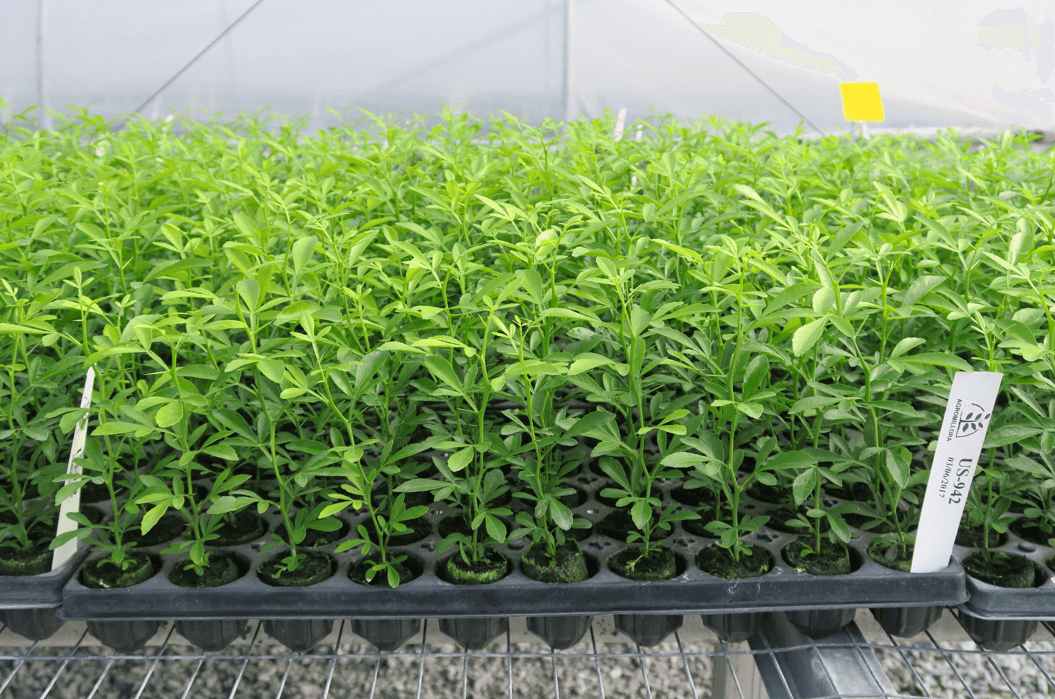
Right choice of plant material
Variety and Rootstock. The most important factor due to the characteristics of the fruit, the taste quality, and the double suitability for fresh or industry, especially for early harvest varieties.
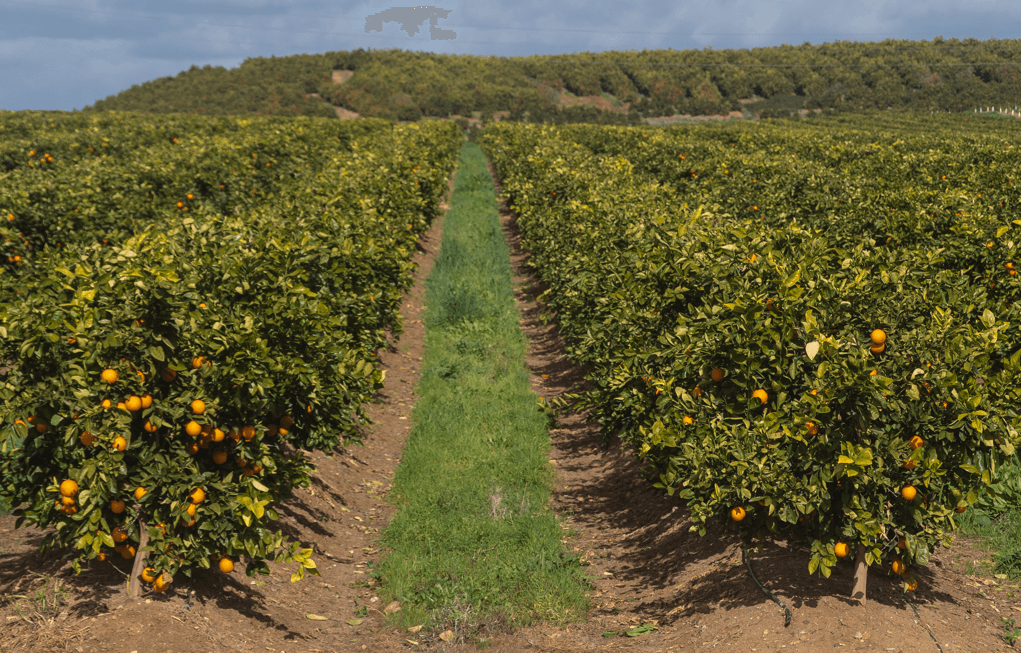
Size controlling rootstocks

Training system in hedge
SHD plantings are based in narrow planting densities resulting on smaller and more bidimensional canopies when compared with the traditional ones.Citrus hedge is based on two-dimensional canopy made up of multiple branches that should efficiently occupy the smaller space allocated
Starting from a SmartTree® tree and through subsequent pruning trimming throughout the training period, the tree will fully develop, occupying the assigned space and reaching full production in the 4th or 5th year.
The planting distances range from 11.5 to 13.1 ft between lines and from 3.9 to 4.9 ft between trees.
This is equivalent to planting densities of 963 to 675 trees/acre. The distance from the lowest branches to the ground should not be less than 1.64 ft to facilitate harvesting and to avoid the loss of fruit due to the movement of the ride-on machine.
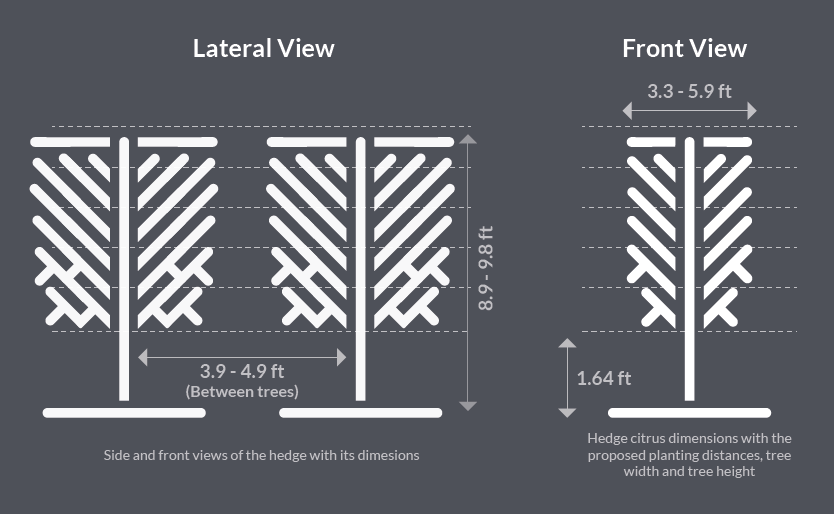
Experiences on SHD in Citrus around the world
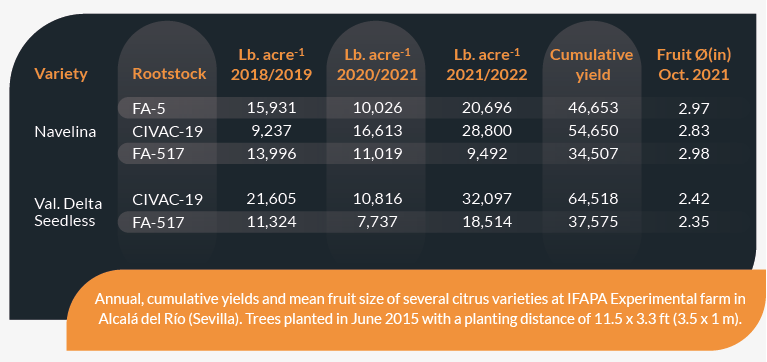
Sevilla, Spain
Annual cumulative yields and mean fruit size of several citrus varieties at IFAPA Experimental farm in Alcalá del Río (Sevilla). Trees planted in June 2015 with a planting distance of 11.5 x 3.3 ft (3.5 x 1 m).
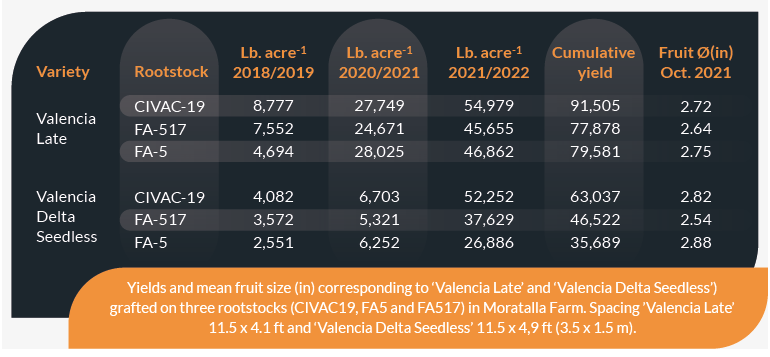
Córdoba, Spain
Yields and mean fruit size (in) corresponding to ‘Valencia Late’ and ‘Valencia Delta Seedless’) grafted on three rootstocks (CIVAC19, FA5 and FA517) in Moratalla Farm. Spacing ’Valencia Late’ 11.5 x 4.1 ft and ‘Valencia Delta Seedless’ 11.5 x 4,9 ft (3.5 x 1.5 m).
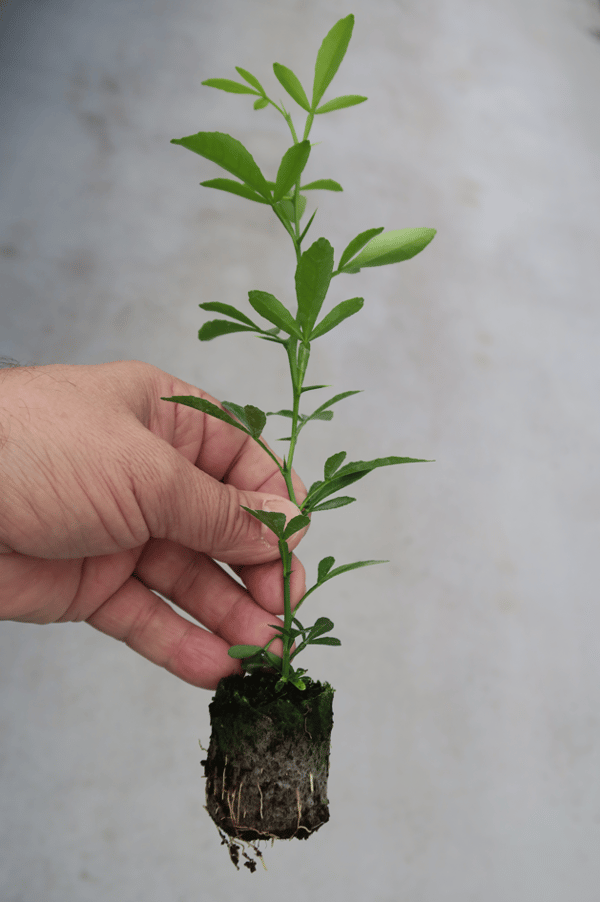
Civac 19
General Information
- Hybrid: Citrus reshni (var. Cleopatra) x Poncirus
trifoliata - Origin: Citrus rootstocks Breeding Program in co-obtenation IVIA - Agromillora
Resistances and tolerances
- Citrus Tristeza Virus (CTV). Tolerant. Presence of the 3 resistance genes by PCR
- Iron Chlorosis. Tolerant to limestone. Better root activity irrigating without Fe than other rootstocks.
- Flooding. Tolerant
- Salinity. Very resistant
- Agronomic behavior. Very high production efficiency, good fruit size and early ripening.
- Vigor. Semi-dwarfing.
The process of training trees in hedge from planting to adult trees


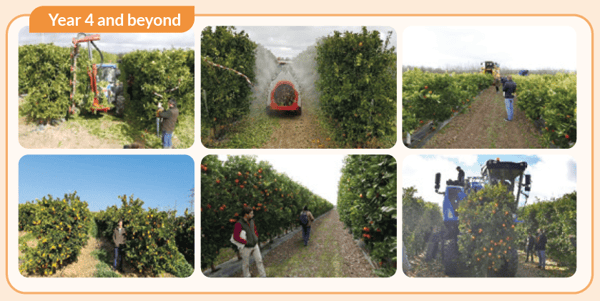
Florida, 2021
Spain, 2023



Do you want more information?
AGROMILLORA FLORIDA | info.fl@agromillora.com | Tel. +1 352 399 2328 | 9038 Co Rd 229, Wildwood, FL 34785, United States